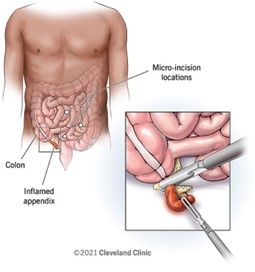When the practical nurse (PN) attempts to assist an 18-year-old client with a mild mental disability to ambulate on the first postoperative day after an appendectomy, she becomes angry and says, "PN, 'Get out of here! I'll get up when I'm ready!" Which response is best for the PN to make?
"You must ambulate to avoid complications which could cause more discomfort than ambulating."
"I know you feel angry about the pain of ambulation, but this is a necessary part of getting well."
"Your healthcare provider has left specific instructions to ambulate on the first postoperative day."
"I will be back in 30 minutes to help you get out of bed and walk around the room today."
The Correct Answer is D
- An 18-year-old client with a mild mental disability is a client who has a lower than average intellectual functioning and some limitations in adaptive skills, such as communication, socialization, and self-care. A mild mental disability may affect the client's ability to understand, cope, or cooperate with medical interventions, such as ambulation after surgery.
- Ambulation is the act of walking or moving around. It is an important part of postoperative care, as it helps to prevent complications such as deep vein thrombosis, pulmonary embolism, pneumonia, atelectasis, constipation, and pressure ulcers. Ambulation also promotes circulation, wound healing, and muscle strength.
- When the practical nurse (PN) attempts to assist the client to ambulate on the first postoperative day after an appendectomy, the client becomes angry and says, "PN, 'Get out of here! I'll get up when I'm ready!" This may indicate that the client is experiencing pain, fear, anxiety, or frustration due to the surgery and the recovery process.
- The best response for the PN to make is to acknowledge the client's feelings, provide reassurance and support, and set a clear and realistic goal for ambulation. This will help to establish rapport, reduce resistance, and motivate the client to participate in the care plan.
- Therefore, option D is the correct answer, as it shows empathy and respect for the client's feelings, while also informing the client of the expectation and time frame for ambulation. Option D also allows the client some time to prepare mentally and physically for the activity.
Options A, B, and C are incorrect answers, as they do not address the client's emotional needs or demonstrate effective communication skills.
Option A is incorrect because it uses a threatening tone and does not acknowledge the client's feelings.
Option B is incorrect because it assumes that the client feels angry about the pain of ambulation, which may not be true or helpful.
Option C is incorrect because it appeals to authority and does not explain the rationale or benefits of ambulation.

Nursing Test Bank
Naxlex Comprehensive Predictor Exams
Related Questions
Correct Answer is ["A","B","D"]
Explanation
A) Correct - Clear beef broth is appropriate for a postoperative full-liquid diet, as it is a clear liquid and meets the dietary restrictions.
B) Correct - Vegetable juice can be included in a postoperative full liquid diet, as long as it is free of solid particles.
C) Incorrect - Canned fruit cocktails may contain solid pieces of fruit, which are not suitable for a full-liquid diet.
D) Correct - Vanilla frozen yogurt is a suitable option for a postoperative full-liquid diet, as it is in a liquid state when consumed.
E) Incorrect - Creamy peanut butter is not appropriate for a full-liquid diet, as it is a solid food and does not meet the diet's requirements.

Correct Answer is A
Explanation
This finding requires immediate action, as it indicates that the client is not receiving the prescribed amount of oxygen, which can compromise the oxygenation and perfusion of the tissues. The PN should adjust the flowmeter to deliver 3 liters per minute of oxygen, and check for any leaks or kinks in the tubing.
The other options are not correct because:
B. The absence of a humidifier does not require immediate action, as it is not a critical component of the oxygen delivery system. A humidifier can help moisten the dry oxygen and prevent mucosal irritation, but it is not essential for oxygenation.
C. The supine position does not require immediate action, as it is not a contraindication for oxygen therapy. The client may prefer this position for comfort or rest, and it does not affect the oxygen delivery or uptake.
D. The snug fit of the cannula does not require immediate action, as it is not a problem for oxygen therapy. The cannula should fit snugly against the client's cheeks to prevent dislodgment or slippage, and it does not interfere with the oxygen flow or diffusion.
Whether you are a student looking to ace your exams or a practicing nurse seeking to enhance your expertise , our nursing education contents will empower you with the confidence and competence to make a difference in the lives of patients and become a respected leader in the healthcare field.
Visit Naxlex, invest in your future and unlock endless possibilities with our unparalleled nursing education contents today
Report Wrong Answer on the Current Question
Do you disagree with the answer? If yes, what is your expected answer? Explain.
Kindly be descriptive with the issue you are facing.
